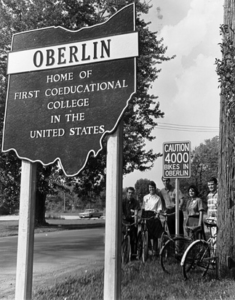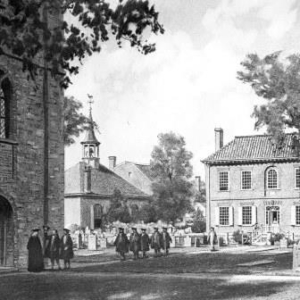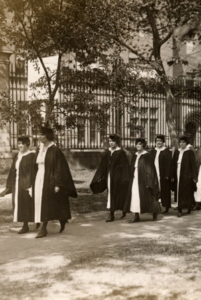International Women’s Day began in 1910 as a strategy to promote equal rights for women. With the commonality of women in education, many realize that women had to fight their way into the higher education system and many other professions.
Over the last 200 years, women’s roles in higher education have evolved substantially. Women were hardly found in the business or educational sector, taking on traditional duties such as a housewife or an elementary school teacher. In the early 1830s, the desire to attend higher educational institutions increased substantially.

It wasn’t until 1861, when private colleges Oberlin and Antioch allowed co-education, that women were admitted to college. Soon after, the first women’s college began after the substantial increase in women seeking educational opportunities. Not only did this allow women to pursue higher levels of education, but it also opened the doors to faculty and administrative positions for women.
Several made their mark by assuming roles at the women’s college as professors, administrators, and, most importantly, Deans. Dean of Women was the first administrative position offered to females in coeducational institutions in the early 1890s. This position became necessary due to the growing amount of women on campus from a mere 21% in the 1870s to 47% in the early 1890s.
Women’s roles skyrocketed from here. Not only were women assuming roles in coed institutions, but they began professional organizations such as the National Associate of Deans of Women (NADW). During their meetings, they would discuss topics such as women’s self-government, leadership opportunities, and women’s intercollegiate athletics.

Women wanted to further their education and pursue graduate degrees in the early 1900s. With this growing demand, the Teacher’s College of Columbia University established a graduate program for all Deans of Women in 1916. The Teacher’s College aided in the development of women as researchers and skilled administrators.
Though educational opportunities continued to advance, it was during
World War II that women filled the majority of positions at women’s colleges and coed colleges when men were drafted to war. Many women took advantage of these opportunities to be college leaders, proving their capabilities. Post WWII, women’s roles on campus consistently grew, with a substantial change regarding the Dean of Women position changing to Dean of Students.
Other historical events aided women’s advancement in higher education. The 1964 Civil Rights Act called for equal treatment and eliminating sexual discrimination. Title IX of the Education Amendments of 1972 protected employees and students in educational institutions. Colleges had no choice but to begin treating men and women as equals.

Since 1950, males have assumed the majority of top administration roles within higher education. Still, women have slowly started moving up the career ladder holding prestigious positions such as Provost and President. Since 1979, women have earned more than half of all bachelor’s and master’s degrees and one-third of all doctoral degrees.
When we observe how much more gender-blended we are today than several decades ago, it is obvious that women have made substantial progress and are gaining recognition and opportunities to fill positions previously held solely by men. Not only is this occurring in higher education, but in other disciplines as well. Currently, 26% of the nation’s colleges and universities are led by women.
We are thankful to the women who dedicated their lives to higher education in the late 1800s and early 1900s, paving the way for today’s female college leaders. It was because of the fight that these women decades ago fought that women today are given the opportunity for such advancement and continue to serve higher roles in higher education and all companies and corporations across the nation.
Terms of submitting this form: I agree that Bryan University may contact me regarding educational services via email, telephone, SMS text message, or automated technology at the email address and phone numbers provided. Message and data rates may apply. Message frequency may vary. Text STOP to cancel anytime. This consent is not required to enroll. For questions, call 1-888-768-6861. Visit our Privacy Policy.